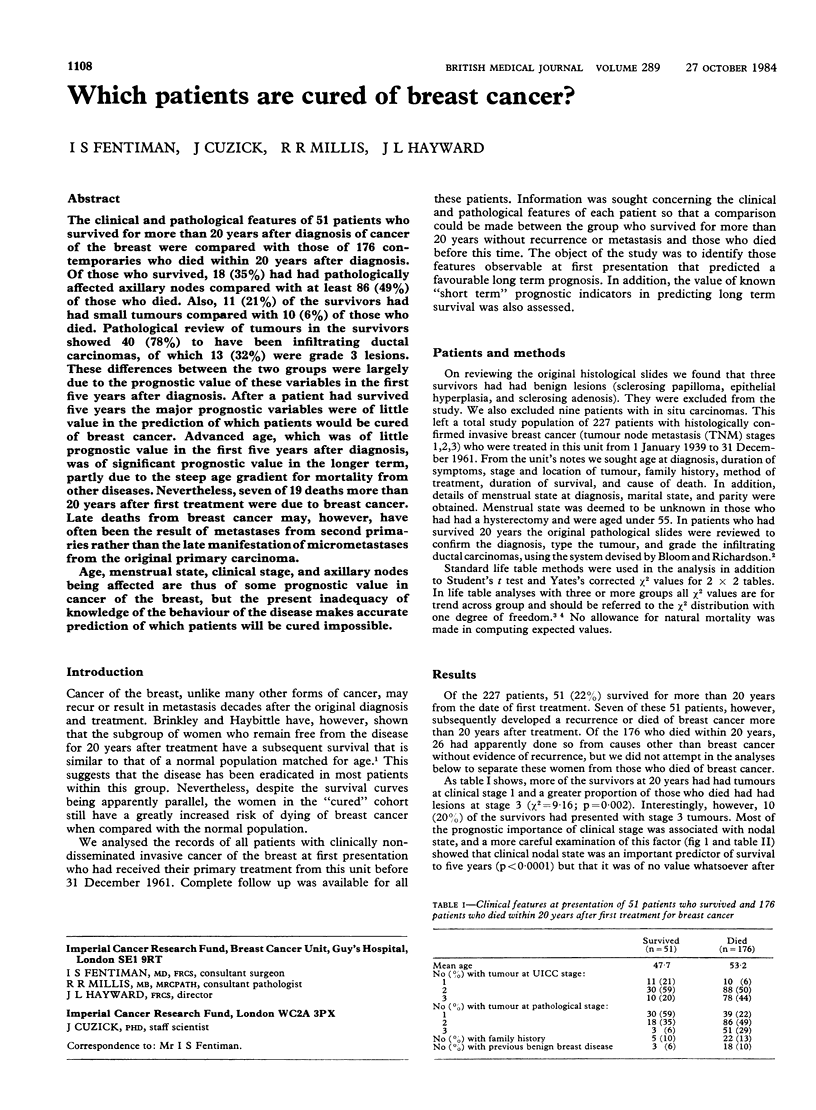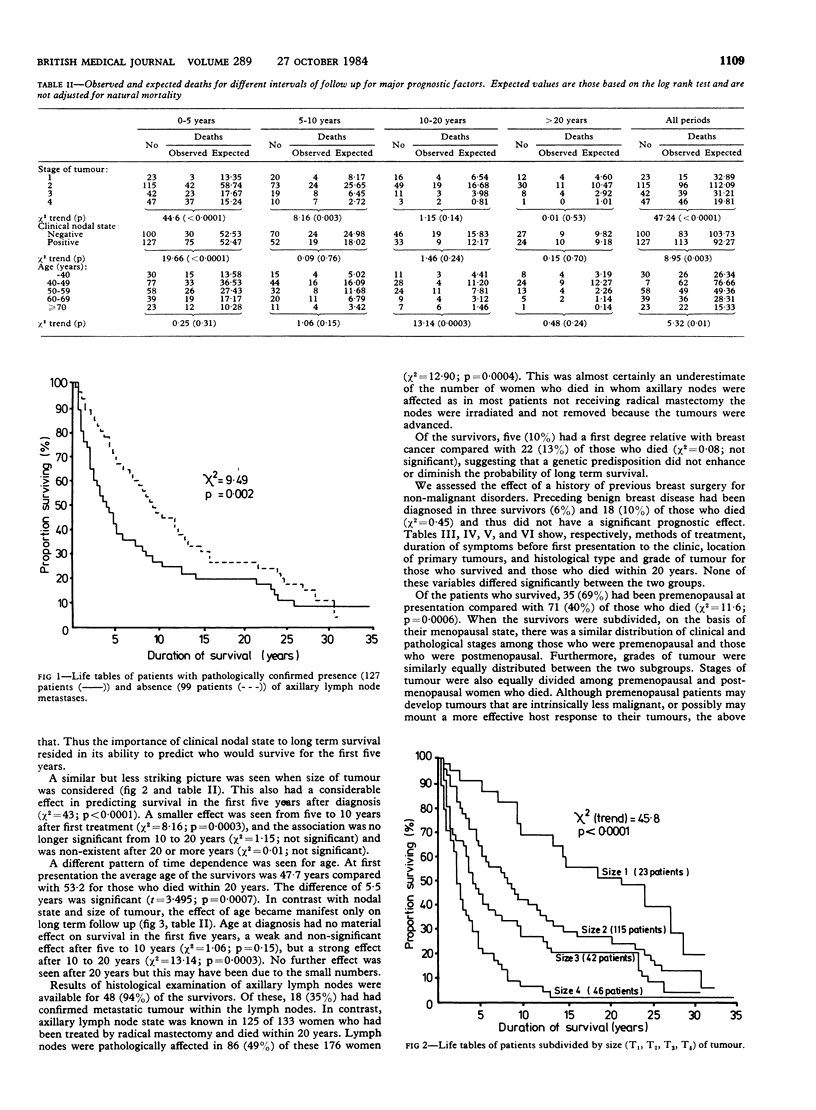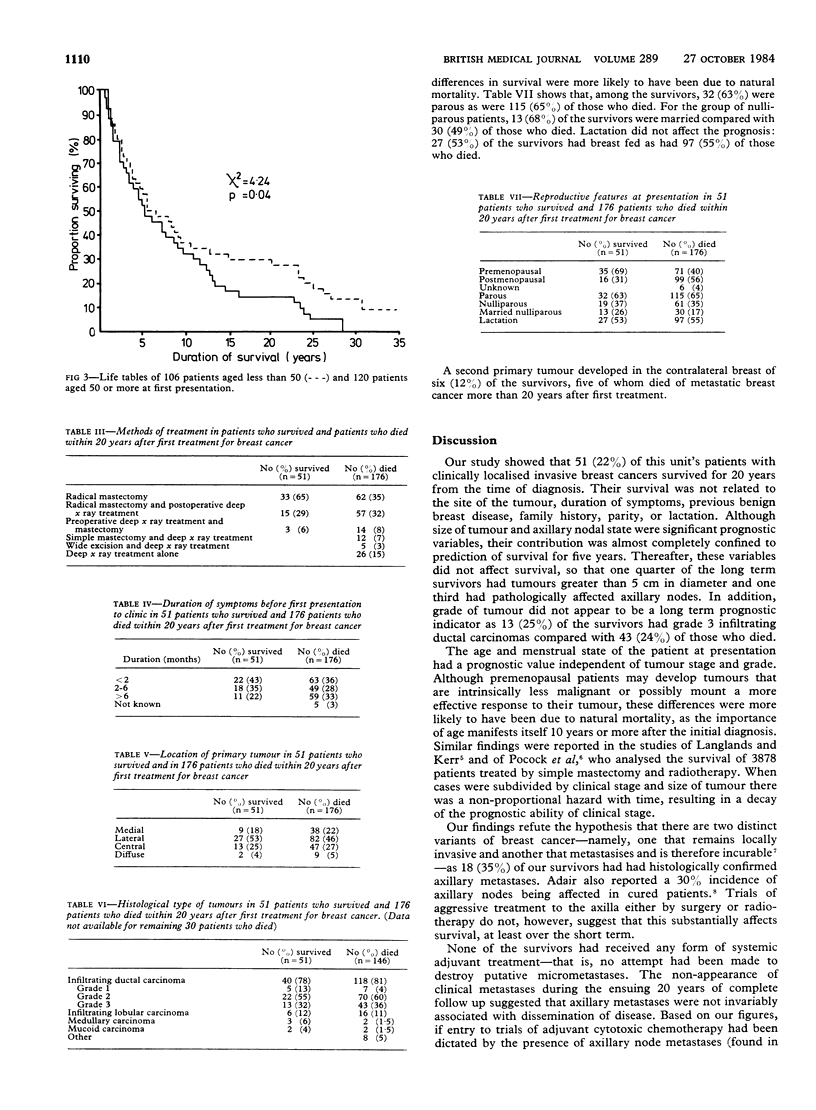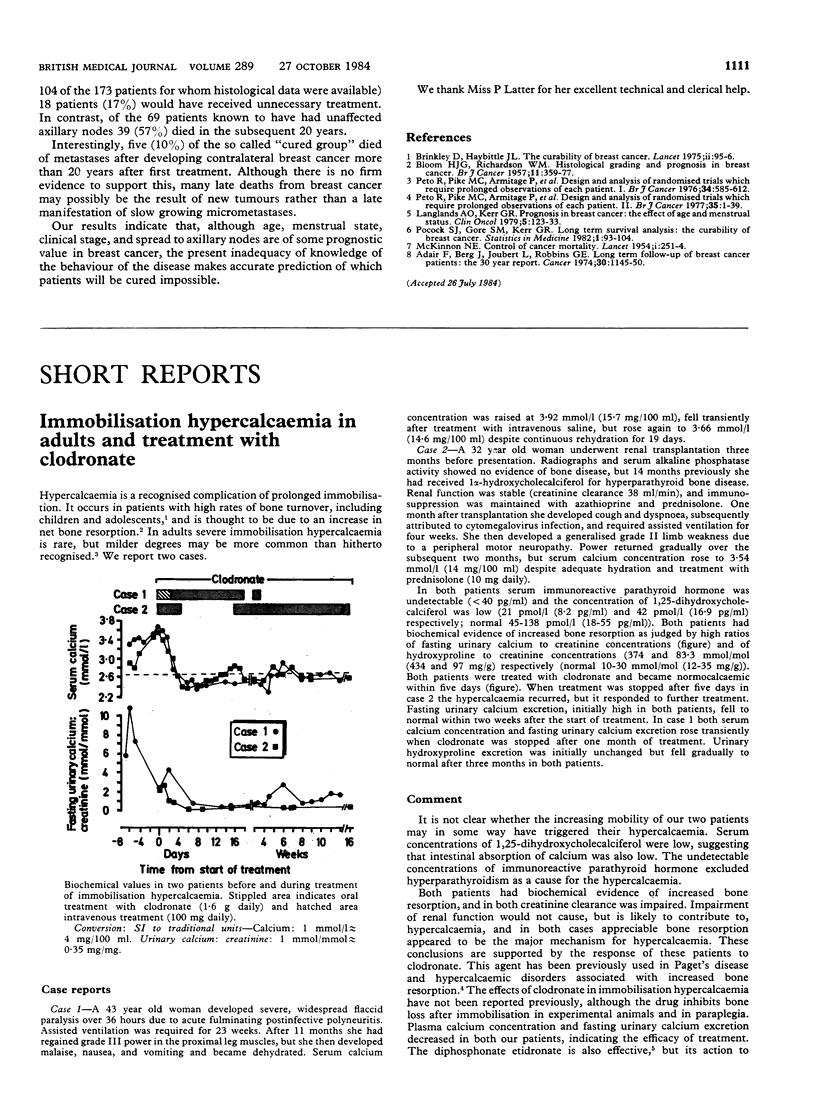Abstract
The clinical and pathological features of 51 patients who survived for more than 20 years after diagnosis of cancer of the breast were compared with those of 176 contemporaries who died within 20 years after diagnosis. Of those who survived, 18 (35%) had had pathologically affected axillary nodes compared with at least 86 (49%) of those who died. Also, 11 (21%) of the survivors had had small tumours compared with 10 (6%) of those who died. Pathological review of tumours in the survivors showed 40 (78%) to have been infiltrating ductal carcinomas, of which 13 (32%) were grade 3 lesions. These differences between the two groups were largely due to the prognostic value of these variables in the first five years after diagnosis. After a patient had survived five years the major prognostic variables were of little value in the prediction of which patients would be cured of breast cancer. Advanced age, which was of little prognostic value in the first five years after diagnosis, was of significant prognostic value in the longer term, partly due to the steep age gradient for mortality from other diseases. Nevertheless, seven of 19 deaths more than 20 years after first treatment were due to breast cancer. Late deaths from breast cancer may, however, have often been the result of metastases from second primaries rather than the late manifestation of micrometastases from the original primary carcinoma. Age, menstrual state, clinical stage, and axillary nodes being affected are thus of some prognostic value in cancer of the breast, but the present inadequacy of knowledge of the behaviour of the disease makes accurate prediction of which patients will be cured impossible.
Full text
PDF



Selected References
These references are in PubMed. This may not be the complete list of references from this article.
- Adair F., Berg J., Joubert L., Robbins G. F. Long-term followup of breast cancer patients: the 30-year report. Cancer. 1974 Apr;33(4):1145–1150. doi: 10.1002/1097-0142(197404)33:4<1145::aid-cncr2820330438>3.0.co;2-0. [DOI] [PubMed] [Google Scholar]
- BLOOM H. J., RICHARDSON W. W. Histological grading and prognosis in breast cancer; a study of 1409 cases of which 359 have been followed for 15 years. Br J Cancer. 1957 Sep;11(3):359–377. doi: 10.1038/bjc.1957.43. [DOI] [PMC free article] [PubMed] [Google Scholar]
- Brinkley D., Haybrittle J. L. The curability of breast cancer. Lancet. 1975 Jul 19;2(7925):95–97. doi: 10.1016/s0140-6736(75)90003-3. [DOI] [PubMed] [Google Scholar]
- Langlands A. O., Kerr G. R. Prognosis in breast cancer: the effect of age and menstrual status. Clin Oncol. 1979 Jun;5(2):123–133. [PubMed] [Google Scholar]
- McKINNON N. E. Control of cancer mortality. Lancet. 1954 Jan 30;266(6805):251–254. doi: 10.1016/s0140-6736(54)90892-2. [DOI] [PubMed] [Google Scholar]
- Peto R., Pike M. C., Armitage P., Breslow N. E., Cox D. R., Howard S. V., Mantel N., McPherson K., Peto J., Smith P. G. Design and analysis of randomized clinical trials requiring prolonged observation of each patient. I. Introduction and design. Br J Cancer. 1976 Dec;34(6):585–612. doi: 10.1038/bjc.1976.220. [DOI] [PMC free article] [PubMed] [Google Scholar]
- Peto R., Pike M. C., Armitage P., Breslow N. E., Cox D. R., Howard S. V., Mantel N., McPherson K., Peto J., Smith P. G. Design and analysis of randomized clinical trials requiring prolonged observation of each patient. II. analysis and examples. Br J Cancer. 1977 Jan;35(1):1–39. doi: 10.1038/bjc.1977.1. [DOI] [PMC free article] [PubMed] [Google Scholar]
- Pocock S. J., Gore S. M., Kerr G. R. Long term survival analysis: the curability of breast cancer. Stat Med. 1982 Apr-Jun;1(2):93–104. doi: 10.1002/sim.4780010202. [DOI] [PubMed] [Google Scholar]


